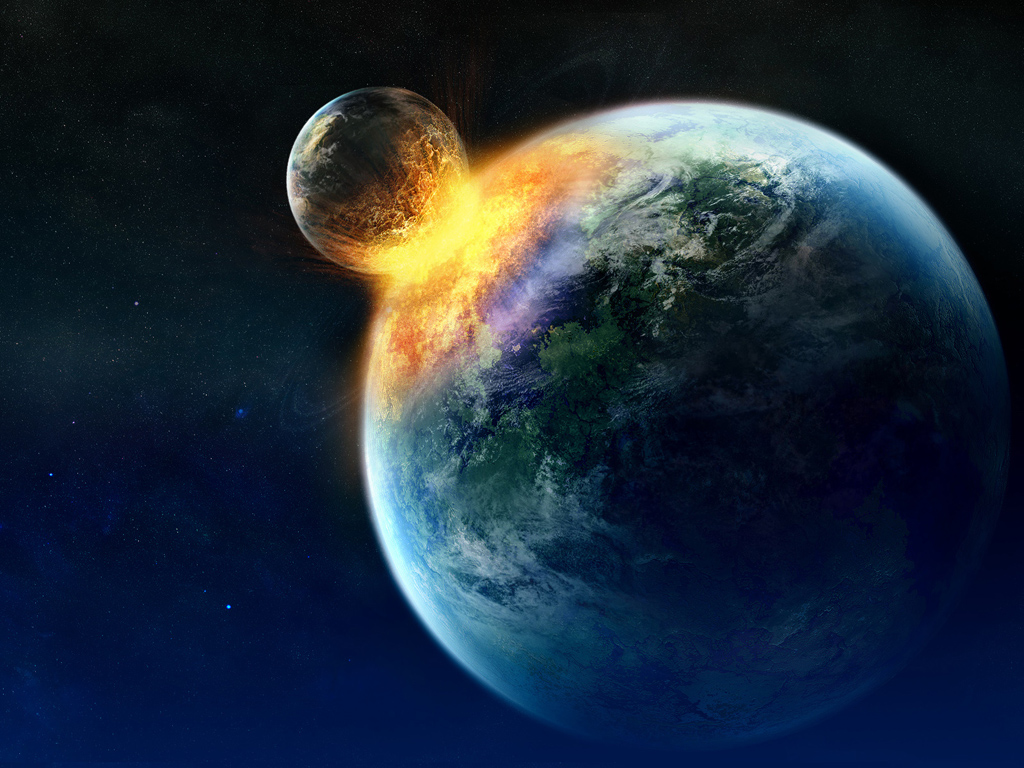In the beginning, the Earth’s composition was very different that how it exists today. A long time ago the Earth’s atmosphere was very similar to today’s Venus and Mar’s atmosphere. It had about 95% carbon dioxide, 2-3% nitrogen, and very little, less than 1% oxygen.
Today the Earth contains 79% nitrogen, 21% oxygen, and 3% water vapour. It is evident that there were many events that happened over billions of years that have contributed to this change in the Earth’s atmosphere.
The Earth had developed so drastically because of the tremendous dust and gas cloud within the Milky Way galaxy- The Earth grew larger as huge meteorites hit it, and die surfed was covered with dust. Volcanoes began to form and emitted lava, ash, and most important gases.
ADVERTISEMENTS:
Carbon dioxide, water vapour, and nitrogen were released into the atmosphere from the volcanoes. This process is called out gassing, and took place within the first million years or so of the Earth’s formation.
Then, about 4 billion years ago, the planet cooled, and the out gassed water vapours condensed into clouds. It rained and produced the oceans, and even enough to cover 95% of the Earth. In addition, because it rained, there was less carbon dioxide in the atmosphere. The carbon dioxide was lost over billion of as the ocean formed there was a chemical reaction in which carbon dioxide and water formed carbonic acid.
It is shown in the equation CO, + H20 = H2COr the carbonic add dissolved oceanic rock into sand, silt, and mud. It is evident because of this geo-chemical process occurred there is more carbon in the rocks and minerals and there is less in the Earth’s atmosphere.
The Earth’s first ever oxygen emerged about two million years ago because of ultraviolet radiation. The water in the Earth’s atmosphere was split into oxygen and hydrogen because of the ultraviolet radiation from the sun.
ADVERTISEMENTS:
The first ever oxygen is from the ultraviolet radiation that occurred in the Earth’s atmosphere. It is interesting to note that 600 million years ago only about 1% of the Earth’s atmosphere was oxygen. Significant quantities of oxygen did not begin until plants arrived on the scene.
The percentage of oxygen increased when plant life evolved and photosynthesis began to happen on the Earth. The first ever plants were blue- Steen algae, which lived the Earth’s oceans. Plants used sunlight, water, and carbon dioxide to make their food in a process called Photosynthesis. The process of photosynthesis can be easily in the equation 6C02 + 6H20 = C6Hp06 -I- 02.
The Parts breathe in carbon dioxide and then release oxygen during photosynthesis, within 500 million years oxygen was the second largest part of the atmosphere after nitrogen. As oxygen became a greater part of the atmosphere the ozone shield emerged the shield was formed when solar ultraviolet radiation forces the reaction for oxygen to form ozone, also known as 0, the ozone protects the Earth and its inhabitants from the harmful radiation from the sun.
The Earth’s atmosphere has changed dramatically since the Earth’s origin about 4.6 billion years ago. There are many factors that contributed to this change over time. By getting a better understanding of our Earth’s atmosphere we can use in many useful ways. We can me this knowledge of the atmosphere for a worthy cause in many areas of science and greedy benefit from it.

